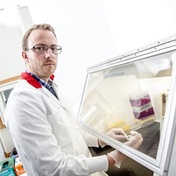While the feat may raise the spectre of resurrecting lost species a la Jurassic Park, study senior author Teruhiko Wakayama said recreating woolly mammoths was "probably impossible."
He and his co-authors did acknowledge, however, the possibility of preserving endangered species and perhaps resurrecting other extinct species.
Other experts thought the implications of such technology could be more immediate - and more human.
"Learning how to manipulate stem cells is an important enterprise, and scientists should be fully engaged in this. Whether we apply it toward bringing back dinosaurs or taking care of real needs on this planet is another question," said Richard Finnell, professor in the Centre for Environmental and Genetic Medicine at the Texas A&M Health Science Centre Institute of Biosciences and Technology.
"Stem cell biology offers tremendous upside, [but] the technology needs to be refined, and these scientists have come up with a way to manipulate these stem cells," Finnell continued. "Science is an interdisciplinary process. If we can grasp a technique that has been used for one approach, it really could be quite beneficial to how we deal with clinical problems today."
Scientists have cloned other species - including celebrity sheep Dolly - by using two live cells. Genetic material is taken from an unfertilised egg and then transferred to another live cell for "incubation," a process known as nuclear transfer.
Until now, researchers had believed that ice crystals formed in frozen cells would cause irreparable damage to the DNA, making cloning of long-dead animals impossible. Wakayama, of the Laboratory for Genomic Reprogramming at the Centre for Developmental Biology in Kobe, Japan, and his colleagues took brain tissue from a mouse strain frozen at minus 20 degrees Celsius for up to 16 years and transferred the nuclei (containing the genetic material) to empty egg cells.
These two-cell embryos were used to generate embryonic stem cell lines that resulted in 12 healthy cloned mice, which grew into normal adults.
The technique did not require nuclei from an intact donor cell. The cloning efficiency was about the same as using conventional cloning methods, the study authors stated.
The findings were published in an issue of Proceedings of the National Academy of Sciences. –(Amanda Gardner/HealthDay News)
Read more:
Human cloning coming soon
Stem cells from skin
November 2008




 Publications
Publications
 Partners
Partners










